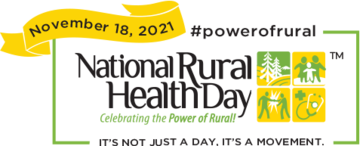
People who want to lose weight but aren't sure how to get started with the DASH Diet are a popular choice. This diet includes eating healthy meals throughout each day. This plan encourages you to swap refined grains for whole grain and lean protein sources. It is important to avoid excessive sugar and saturated fats. Additionally, it is important to drink lots of water.
DASH diet targets blood pressure reduction through a variety factors. DASH-style patterns can help lower your chances of developing diabetes, and even kidney disease. The DASH diet was found to have protective components, including nuts, beans, low-fat dairy products, and legumes, according to Atherosclerosis Risk in Communities research. However, the risk of contracting these diseases was significantly higher if you consume high-fat dairy foods and red meat.

It's important that you quit smoking, even though the DASH diet is low in sodium. This habit can increase the risk of heart disease. You should also avoid smoking in your workplace. The DASH diet recommends that you avoid sugar-sweetened beverages. Instead, opt for water, tea, and milk. It's best to make small changes over time so that you can be sure that you're meeting the DASH diet guidelines. Consult your healthcare provider to see if you are suitable for the DASH lifestyle.
Hypertension sufferers may find the DASH-Diet beneficial. This diet is low in sodium and high in fiber, which can lower blood pressure. These types of foods are important for the prevention and treatment of hypertension. Anyone can follow the DASH diet in order to lead a healthy lifestyle. If you are looking to lose weight and increase your energy levels, the DASH diet is a great option. The DASH diet can be restrictive but it is very easy to follow.
The DASH diet can be recommended for those with metabolic syndrome. This diet can lower blood pressure for people with high bloodpressure. The diet can improve blood circulation and reduce the risk of heart disease. The DASH diet may be beneficial for people with kidney disease. The DASH diet lowers both systolic as well as diastolic blood pressures. It is particularly beneficial for people with high blood pressure as it lowers your risk of heart attack or stroke.

The DASH Diet reduces systolic & diastolic blood Pressure by 4 mmHg. It has minimal impact on people with normal blood Pressure. However, this drop in blood pressure does NOT necessarily mean you have a lower chance of getting heart disease. The DASH diet is recommended for those with high blood pressure who are sensitive to salt and want to improve their insulin sensitivity. High cholesterol patients are less likely to benefit from the DASH diet as it may increase their risk of developing diabetes.
FAQ
How much should I weigh for my height and age? BMI calculator & chart
The best way to determine how much weight you need to lose is to use a body mass index (BMI) calculator. The healthy BMI range for a healthy person is 18.5 to 24.9. Aim to lose 10 pounds per month if your goal is to lose weight. Enter your height and weight to calculate your BMI.
This BMI chart can help you find out if or not you are obese.
How often should I exercise
For a healthy lifestyle, exercise is vital. There is no time limit on how much you should exercise. It is important to find something that you enjoy and stay with it.
Three times a week, you should be aiming to complete 20-30 mins of moderate intensity activity. Moderate intensity is when you still have to breathe hard after the workout. This type is good for burning around 300 calories.
Walk for at least 10 minutes four days a weeks if you prefer walking. Walking is easy on the joints and has low impact.
If you'd rather run, try jogging for 15 minutes three times a week. Running is a great way of burning calories and building muscle tone.
You should start slowly if it's your first time exercising. Begin by only doing 5 minutes of cardio five times per week. Gradually increase your cardio time until you reach the goal.
What does it take to make an antibiotic work?
Antibiotics are drugs which destroy harmful bacteria. Antibiotics can be used to treat bacterial infection. There are many different types of antibiotics. Some are taken orally, some are injected, and others are applied topically.
People who have been exposed are often given antibiotics. If someone has chicken pox, they might need to take an oral antibiotic in order to prevent shingles. A penicillin injection might be given to prevent pneumonia in someone who has had strep.
Children should not be given antibiotics without the consent of a doctor. Side effects of antibiotics can be more dangerous for children than for adults.
The most common side effect of antibiotics is diarrhea. Other possible side effects include diarrhea, nausea and vomiting, allergy reactions, dizziness, dizziness, stomach cramps, nausea, vomiting or allergic reactions. These symptoms usually go away after treatment ends.
What are the best 10 foods to eat?
These are the 10 best foods you can eat:
-
Avocados
-
Berries
-
Broccoli
-
Cauliflower
-
Eggs
-
Fish
-
Grains
-
Nuts
-
Oats
-
Salmon
How can you live a healthy life?
Living a healthy lifestyle includes eating right, exercising regularly, getting enough sleep, managing stress, and having fun! Avoiding sugar and processed foods is key to eating well. Exercise is good for your body and muscles. Sleeping enough can improve memory and concentration. Stress management can reduce anxiety and depression. Fun keeps us happy and healthy.
How can my blood pressure be controlled?
Find out the causes of high blood pressure first. Next, take steps that will reduce the risk. These could include taking medication, eating less salt and losing weight.
Make sure you're getting enough exercise. Walking is a great alternative if you don't have the time or energy to exercise regularly.
You should join a gym if you are unhappy with your exercise routine. You'll probably want to join a gym where there are other people who share your goals. It's easier to stick to an exercise routine when you know someone else is going to see you at the gym.
Exercise: Good and bad for immunity?
Exercise is good for your immune systems. Exercise increases white blood cell production, which helps fight off infection. Your body also eliminates toxins. Exercise helps prevent diseases like cancer and heart disease. Exercise also helps to reduce stress levels.
However, exercising too much can weaken your immune system. Exercising too hard can make your muscles sore. This can lead to inflammation and swelling. The body then needs to make more antibodies to fight infection. However, these antibodies can also cause allergic reactions and autoimmune diseases.
So, don't overdo it!
Statistics
- WHO recommends reducing saturated fats to less than 10% of total energy intake; reducing trans-fats to less than 1% of total energy intake; and replacing both saturated fats and trans-fats to unsaturated fats. (who.int)
- In both adults and children, the intake of free sugars should be reduced to less than 10% of total energy intake. (who.int)
- The Dietary Guidelines for Americans recommend keeping added sugar intake below 10% of your daily calorie intake, while the World Health Organization recommends slashing added sugars to 5% or less of your daily calories for optimal health (59Trusted (healthline.com)
- According to the Physical Activity Guidelines for Americans, we should strive for at least 150 minutes of moderate intensity activity each week (54Trusted Source Smoking, harmful use of drugs, and alcohol abuse can all seriously negatively affect your health. (healthline.com)
External Links
How To
What does the term "vitamins" mean?
Vitamins are organic compounds that can be found in foods. Vitamins are essential for our bodies to absorb nutrients from the foods we eat. Vitamins cannot be made by the body; they must be taken from food.
There are two types if vitamins: water soluble, and fat soluble. Water-soluble vitamins dissolve in water easily. Some examples include vitamin C,B1 and B2 vitamins (thiamine), B2 and riboflavin, B3 and B6 vitamins (niacin), folic acids, biotin, pantothenic acids, and cholesterol. Fat-soluble vitamins are stored in the liver, fatty tissue and kidneys. Some examples include vitamin D and E, K, A and beta carotene.
Vitamins can be classified by their biological activity. There are eight major vitamin groups:
-
A – Essential for normal growth, and the maintenance of good health.
-
C - essential for nerve function and energy generation.
-
D – Essential for healthy teeth, bones and joints
-
E is necessary for good vision, reproduction.
-
K - required for healthy muscles and nerves.
-
P – vital for building strong bones.
-
Q - aids digestion, absorption and absorption iron
-
R - Required for red blood cell production
The recommended daily intake (RDA), of vitamins varies with age, gender and physical condition. The U.S. Food and Drug Administration has established the RDA values.
For example, the RDA for vitamin A is 400 micrograms per dayfor adults 19 years or older. Pregnant women require 600 micrograms daily to support fetal development. Children ages 1-8 require 900 micrograms per day. Infants under one year of age require 700 micrograms per day, but this amount decreases to 500 micrograms per day between 9 months and 12 months of age.
Children aged between 1-18 years require 800 micrograms of sugar per day, while overweight children need 1000 micrograms. Children who are underweight receive 1200 micrograms every day to meet their nutritional requirements.
Children ages 4-8 years who have been diagnosed with anemia need 2200 micrograms per day of vitamin C.
2000 micrograms is the minimum daily intake for adults over 50 years old to maintain good health. Because of their higher nutrient needs, women who are pregnant or nursing need 3000 mg per day.
Adults over 70 require 1500 micrograms each day, since they lose around 10% of their muscle mass every decade.
Women who are pregnant and lactating need more nutrients than the RDA. Pregnant mothers need 4000 micrograms per daily during pregnancy and 2500 after giving birth. Breastfeeding mothers require 5000 micrograms daily when breast milk production is occurring.